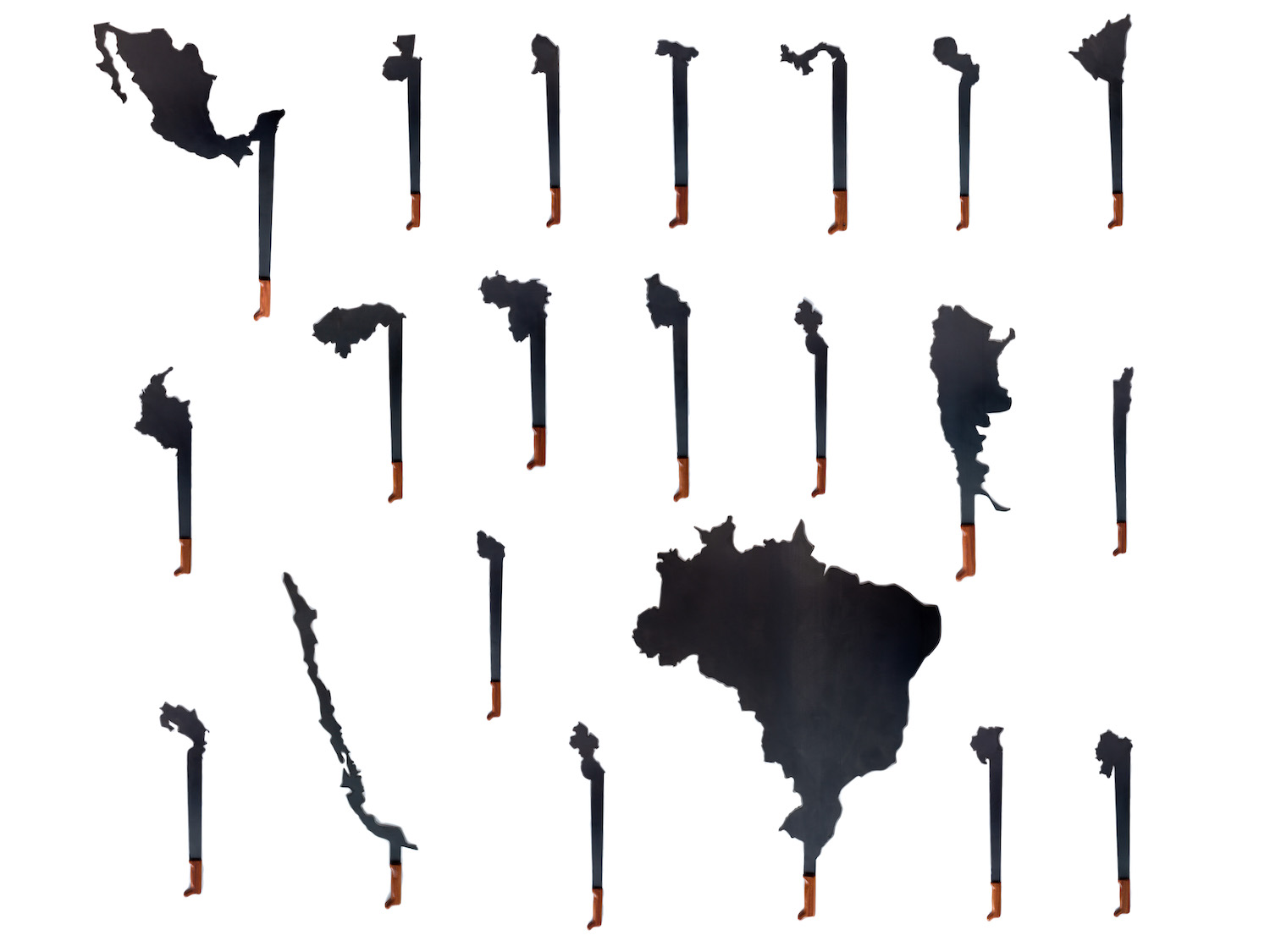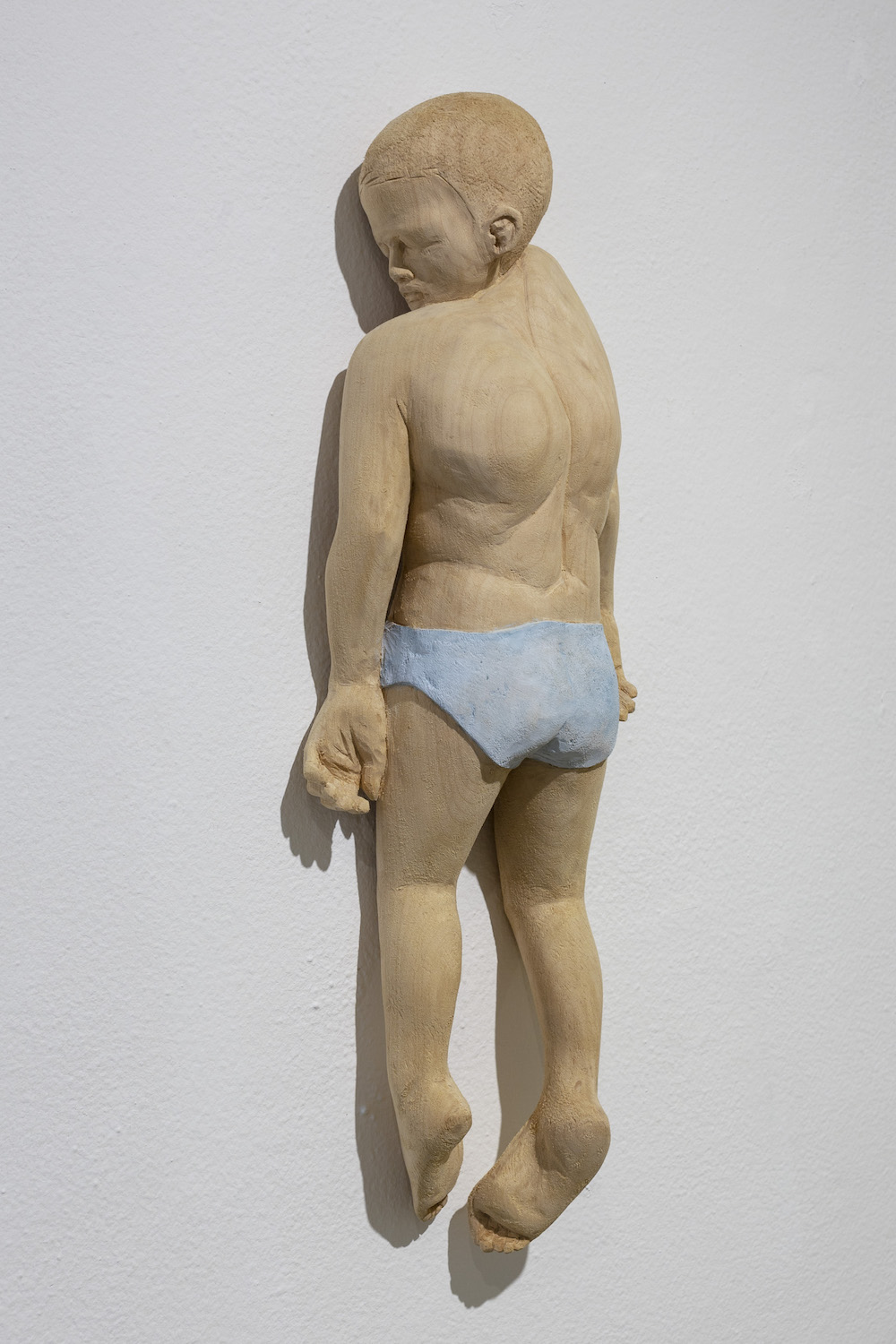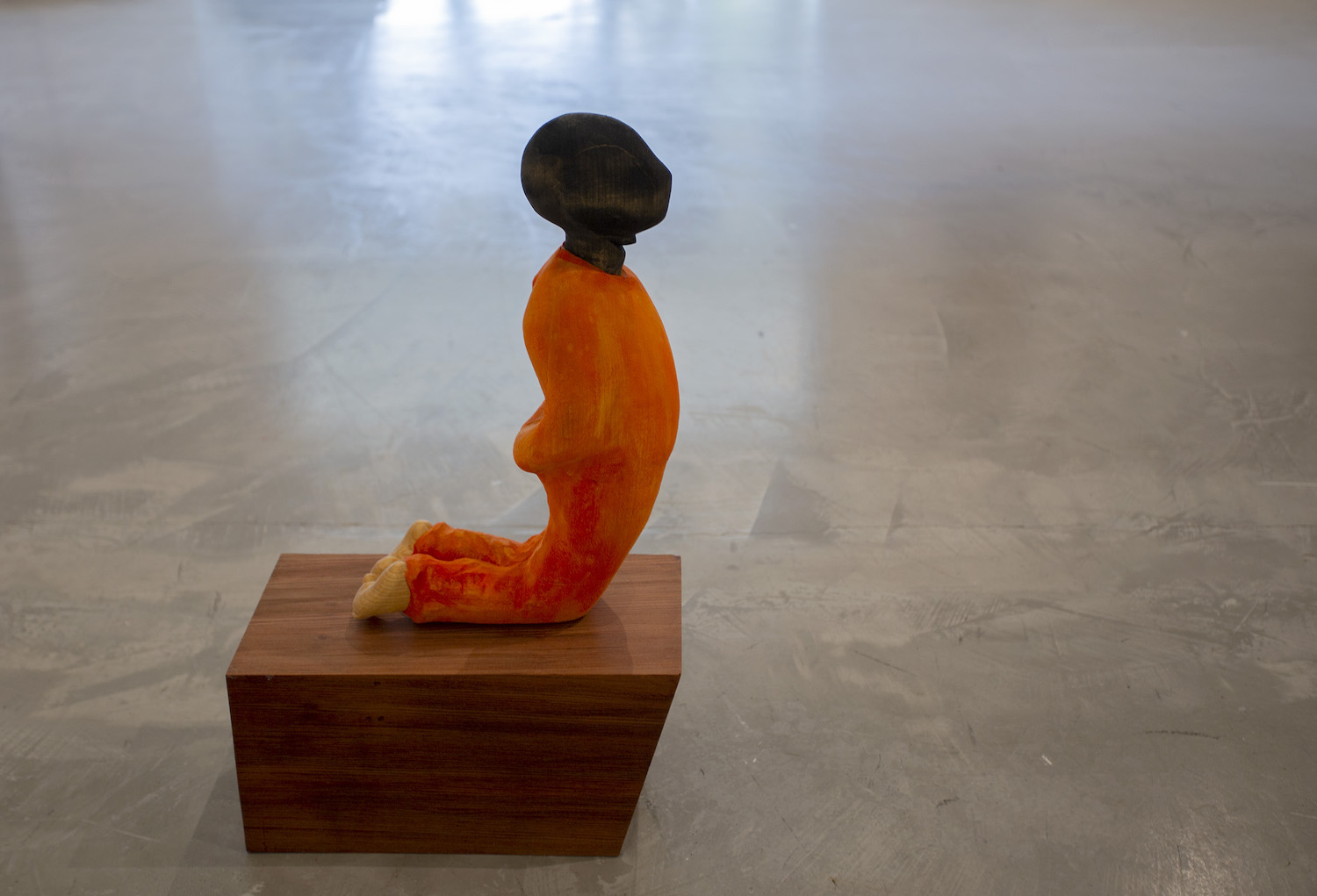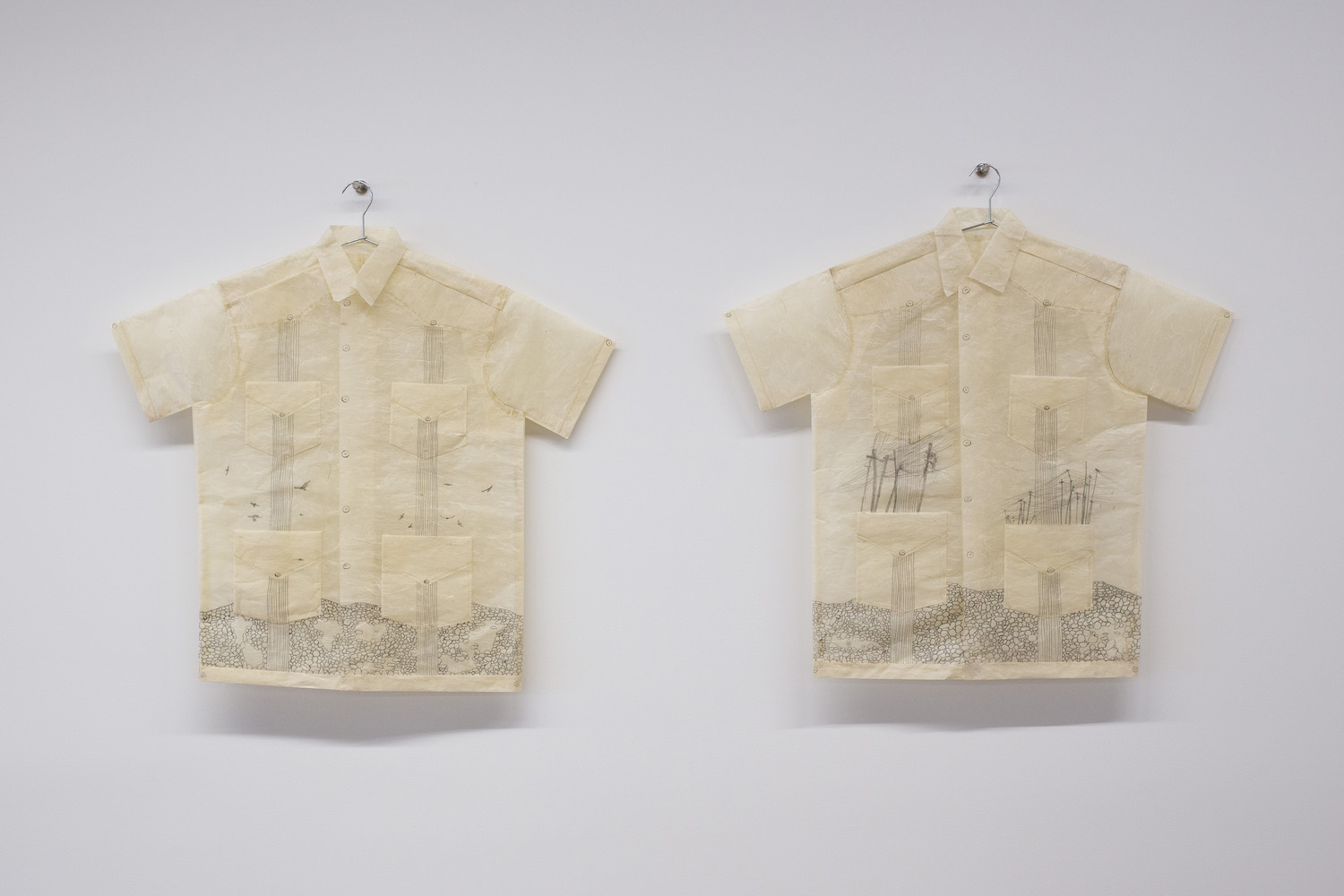Santiago Cal is a humble man with a demeanor that challenges traditional Western conceptions of artistic genius. His subtlety and humility are visible in his works, which are usually small or medium-sized carvings of fragile children. His visual narratives don’t hit you over the head.
Cal lives in Lincoln, Nebraska, a long way—culturally and geographically—from his country of origin, Belize. Like millions of other people in this hemisphere, Cal has mixed ancestry; his father’s side is of Yucatán Maya heritage. During the Caste Wars—a series of battles led by the Maya against Spanish colonizers—his family fled to Belize to avoid enslavement. But the process of colonization continued. His grandparents were ashamed to speak Yucatec Maya, and Cal’s father never learned the language. However, as Cal says, “Belize is a spot of political stability in the region, a place where people can go and escape.” On the other side, Cal is of European descent, his mother a former Pennsylvanian.

Marks of Longevity, 2019; steel and mahogany; courtesy of the artist.
One series of Cal’s titled “Marks of Longevity’’ provides an entry point to his personal and political history. Cal crafted machetes from steel in the shape of such Latin American countries as Argentina, Chile, Mexico and Brazil. The machete’s handles are carved from Honduran mahogany, a tropical wood harvested for export. They are mounted on walls in groups, but surprisingly, not in a way that respects the “real” geographical layout of the world.
An unspoken hierarchy is implied in the mounting, based on size, uniqueness and a country’s cultural proximity to Europe. For most viewers, it’s easy to recognize Mexico or Argentina, but unless you’re a Latin American specialist, it’s probably a challenge to find Guatemala, Ecuador or Belize. In this way, it’s also about a viewer’s lack of knowledge of this region.
Cal first used machetes in the early 2000s. After painting three machetes white, he displayed them on sheets of zinc roofing and poured red paint onto the artwork’s surface. “I grew up with this tool,” he says. “Being a kid and having a small version of one for [cutting away] vegetation or snakes.” It was a utilitarian tool, but of course, like a hammer used to build a house or smash someone’s skull, it could be used for other purposes. “Thinking about this tool,” says Cal, “it’s an anxious object. You don’t know if it’s going to sit there passively or be used for harm.”

Durable View, 2003; zinc roofing, machetes and paint; courtesy of the artist.
Using this object for an art installation can be read in a number of ways. Take the machete shaped like Mexico—a country that has a contentious history with America. If we take the machete as a tool that can be useful or harmful, we can see that the inhabitants of Mexico live with these conditions and are often in a state of anxiety and fear of an attack.
An essentialist interpretation would be that Mexicans are wild cards that can be useful or dangerous. Indeed, Mexicans in the US are biasedly perceived as both model minorities and as dangerous immigrants.
On a road trip from Belize to the US, these subtle dichotomies became palpable for Cal. Crossing the Belize-Mexico border was a pretty casual affair, unlike crossing from Mexico into the US.“When I reached the [latter] border, the bus was dead silent,” says Cal. Border guards treated people with suspicion. Some [passengers] were detained.” After crossing, Cal vividly remembers an “eruption of joy.”

Thin Air, 2018; wood and watercolor; courtesy of the artist.
To Cal, these tribulations can sometimes be seen as humorous; he calls them “razor-edge thin lines marked by rivers or arbitrariness,” and mentions a soccer field that exists in both Belize and Guatemala, stretching across their border.
Cal also makes hand-carved wooden children. These figures often exist in dreamlike situations that exude vulnerability. When growing up in Belize, he thought that art consisted of “making replications of flora for tourists.” He adds that “the toil of the hand, the value of labor is important to me. I remember at an early age thinking of laborers as heroes and romanticizing that. I value the labor of caring.”
Growing up in Central America in the ’70s and ’80s, I didn’t experience violence, but was impacted by the residual experiences from all the refugees coming from Honduras,” Cal says. “That shaped how I see people, and it struck emotions that were so deep and profound to me.”

Radio Tower, 2015; wood and watercolor; courtesy of the artist.
After considering the practice of Claudia Alvarez, a proud Mexican-American New York–based artist who paints and sculpts children, Cal took some time to reflect on what he was doing and how he could change: “At that point, I started to make figures of adults that were doll-sized.”
These figures are highly diverse in setting and composition: some are nude, others lie in bed, another holds a dead chicken. Radio Tower
depicts a male figure in an orange suit with a head covering kneels down with his hands on his back, referencing the horrors of internment. “My sculpture is small and isolated, but I wanted the orange to scream,” says Cal.

Sweat, 2019; rice paper and graphite; courtesy of the artist.
Cal’s work can be very literal, as in Sweat: a pair of paper shirts on wire hangers. Styled after a guayabera, a shirt worn primarily by men in Latin America and the Caribbean, Cal used rice paper for this piece because rice and beans are staples of the Belizean diet. “I have always responded to these shirts because people wear them with pride as the anti-dress suit and it is a shirt that’s accessible to all socio-economic levels,” Cal told me. Images from the real world are drawn on the shirt’s surface with graphite: netted telephone lines emerge from shirt pockets, while circling vultures suggest death.
In other recent works, Cal reflects on fatherhood using his son as a muse. He uses the growth of his child as a source to marvel and wonder at the shaping and development of someone’s identity. This is what makes Cal’s practice unique: it can touch upon subjects as serious as murder but he can also remind us of our inherent humanity.


